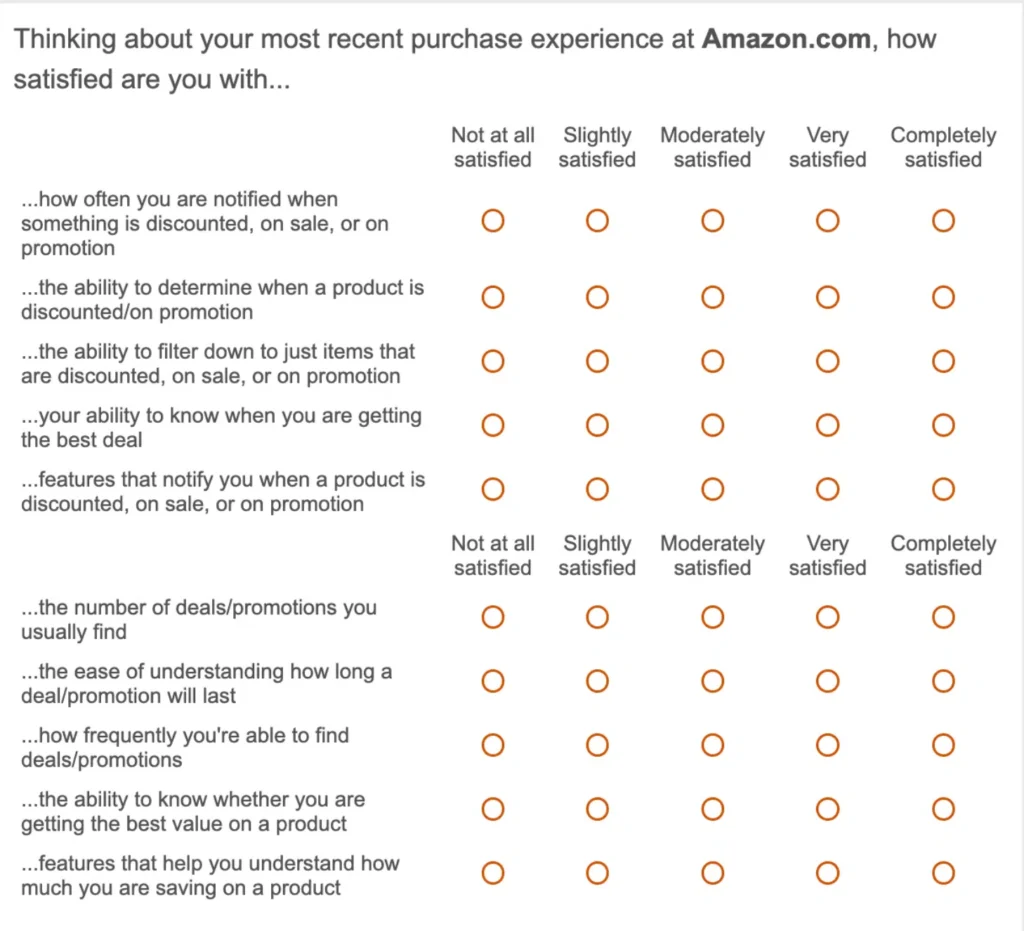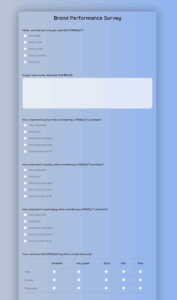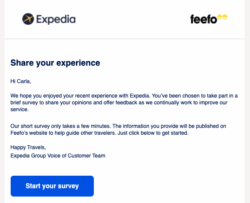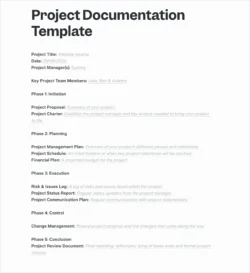In today’s competitive landscape, truly understanding your customers isn’t just a nice-to-have; it’s absolutely essential for sustainable growth. Knowing what makes them tick, what they love, and where you might be falling short can make all the difference between thriving and just surviving. That’s where customer satisfaction surveys come in, acting as your direct line to valuable insights, helping you refine your offerings and build stronger relationships.

But let’s be honest, staring at a blank page when you’re tasked with creating a survey can feel a bit overwhelming. What questions should you ask? How should you phrase them? How do you ensure you gather truly actionable feedback? This is precisely why a well-designed sample customer satisfaction survey template can be an invaluable starting point, giving you a solid framework to build upon and customize for your unique business needs.
Why Understanding Customer Satisfaction is Your Business’s North Star
Think of your customers’ feedback as a compass, guiding your business in the right direction. Without it, you’re essentially sailing blind, making decisions based on assumptions rather than concrete data. Customer satisfaction surveys aren’t just about collecting stars or thumbs up; they’re about uncovering the deeper truths that drive customer loyalty, identify areas for improvement, and ultimately, fuel your growth.
When you regularly tap into the sentiment of your customer base, you gain unparalleled insights into their experience with your products, services, and overall brand. This isn’t just about fixing problems; it’s about proactively enhancing what works well, identifying new opportunities, and ensuring your offerings genuinely resonate with your target audience. It helps you stay agile and responsive in an ever-evolving market.
Consider the ripple effect of satisfied customers. They are more likely to make repeat purchases, try new products you introduce, and become vocal advocates for your brand, spreading positive word-of-mouth. On the flip side, dissatisfied customers can quickly erode your reputation, especially in the age of online reviews and social media. A well-executed survey helps you intercept potential issues before they escalate, turning potential detractors into loyal fans.
The Core Benefits of Listening
Leveraging a comprehensive customer satisfaction survey allows you to:
- **Improve Products and Services:** Direct feedback highlights what features are loved, what needs tweaking, and what new solutions customers are craving.
- **Identify Pain Points:** Uncover specific frustrations or bottlenecks in the customer journey that might otherwise go unnoticed.
- **Boost Customer Retention:** Addressing concerns promptly and demonstrating that you value their opinion significantly increases the likelihood of customers sticking around.
- **Enhance Customer Loyalty:** When customers feel heard and see their feedback acted upon, it builds trust and strengthens their connection to your brand.
- **Drive Business Growth:** Satisfied customers lead to repeat business, referrals, and a stronger market position, contributing directly to your bottom line.
In essence, investing in understanding customer satisfaction is an investment in your business’s future. It provides the data you need to make informed decisions, innovate effectively, and cultivate a truly customer-centric culture.
Building Your Ideal Survey: From Template to Tailored Insight
Now that we’ve established the immense value of customer feedback, let’s talk about putting it into practice. While a sample customer satisfaction survey template offers a fantastic starting point, the real magic happens when you adapt it to perfectly fit your specific goals. You wouldn’t use a general blueprint to build a custom home, and the same principle applies to your surveys.
Begin by defining your objectives. What exactly do you want to learn? Are you trying to gauge overall satisfaction, evaluate a new product launch, assess your customer support, or understand the purchase journey? Your objective will dictate the types of questions you need to ask. For instance, if you’re launching a new feature, your questions will be hyper-focused on usability, value, and potential improvements for that specific feature.
Next, consider the different types of questions that will give you the most comprehensive insights. A mix of quantitative (numerical ratings, multiple choice) and qualitative (open-ended comments) questions is usually most effective. Quantitative data gives you measurable trends and benchmarks, while qualitative data provides the rich, nuanced context behind those numbers, explaining the “why.”
Keep your survey concise and respectful of your customers’ time. A lengthy, complicated survey is likely to result in survey fatigue and low completion rates. Prioritize the most critical questions and phrase them clearly and unambiguously. Avoid jargon or leading questions that might sway their answers. Remember, you want honest, unfiltered feedback.
Once you’ve drafted your survey, test it! Ask colleagues or a small group of friendly customers to complete it and provide feedback on clarity, length, and overall flow. This crucial step helps you iron out any kinks before sending it to your entire customer base. Finally, plan how you’ll distribute the survey (email, website pop-up, in-app, SMS) and, critically, how you’ll analyze the responses and act upon them. Data without action is just numbers on a page.
Here are some essential categories of questions you might include, drawing inspiration from a comprehensive template:
- **Overall Satisfaction:** How satisfied are you with our product/service overall? (e.g., on a scale of 1-10)
- **Product/Service Quality:** How would you rate the quality of [specific product/feature]?
- **Customer Support Experience:** How helpful and efficient was our customer support?
- **Likelihood to Recommend (NPS):** How likely are you to recommend us to a friend or colleague? (Net Promoter Score question)
- **Value for Money:** Do you feel you receive good value for the price you pay?
- **Ease of Use/Experience:** How easy was it to [specific action, e.g., navigate our website, use the product]?
- **Open-Ended Feedback:** What one thing could we do to improve your experience? (Provides invaluable qualitative insights)
Implementing and regularly reviewing a customer satisfaction survey isn’t a one-time task; it’s an ongoing dialogue with your most valuable asset: your customers. By making it a consistent part of your business strategy, you ensure that your operations are always aligned with their needs and expectations.
Embracing customer feedback with open arms and a commitment to continuous improvement will not only help you identify and resolve issues but also discover new opportunities for growth and innovation. It’s about building a business that not only listens but truly understands and adapts, fostering loyalty and ensuring long-term success in a dynamic marketplace.



